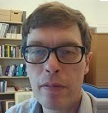5.6: The Predictive Power of QED
( \newcommand{\kernel}{\mathrm{null}\,}\)
It is hard to say that a theory has predictive power without comparing it to experiment, so let me highlight a few successes of QED.
One of those is the so-called g factor of the electron, related to the ratio of the spin and orbital contributions to the magnetic moment. Relativistic theory (i.e., the Dirac equation) shows that g=2. The measured value differs from 2 by a little bit, a fact well accounted for in QED. experimentg/2=1.00115965241(20)Theoryg/2=1.00115965238(26) Some of the errors in the theory are related to our knowledge of constants such as ℏ, and require better input. It is also clear that at some scale QCD (the theory of strong interactions) will start playing a rôle. We are approaching that limit.


